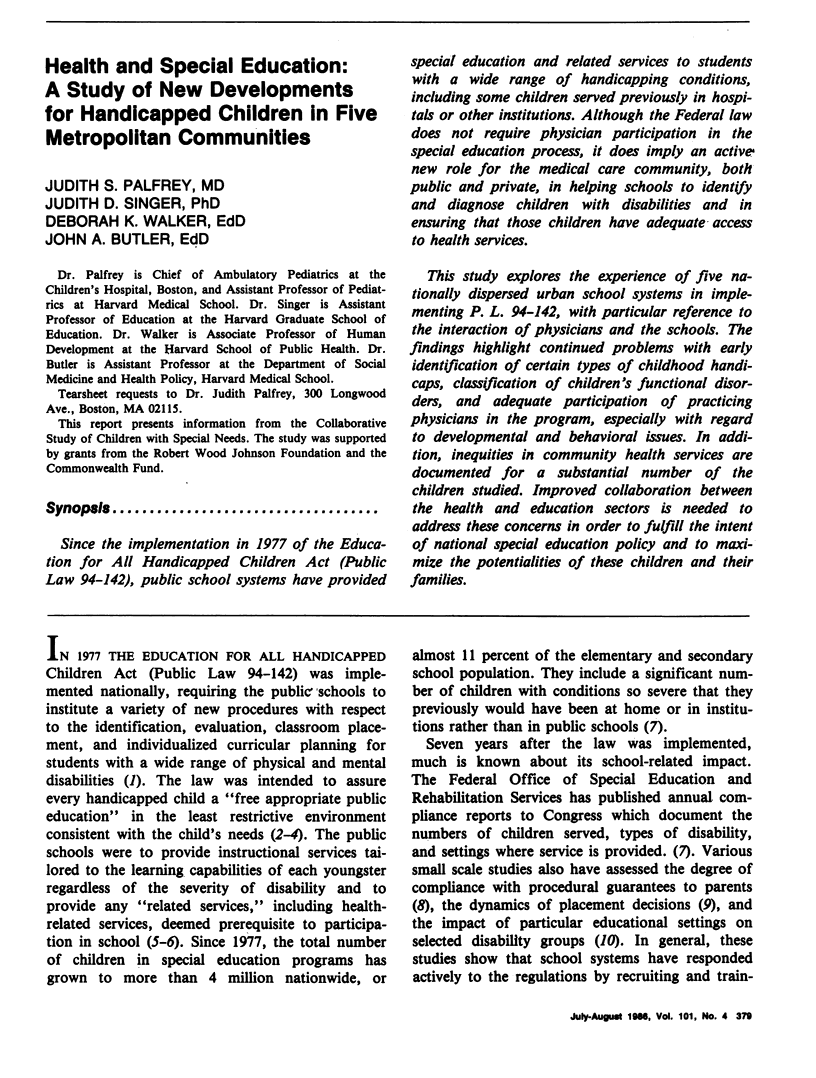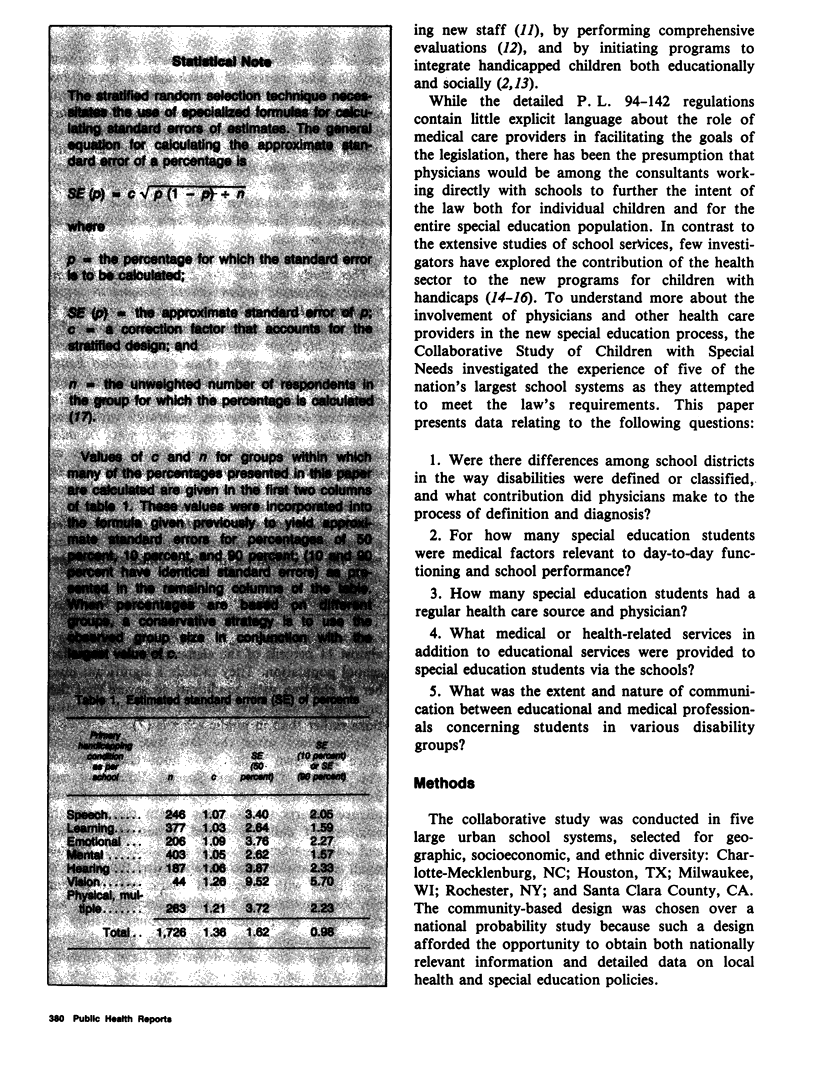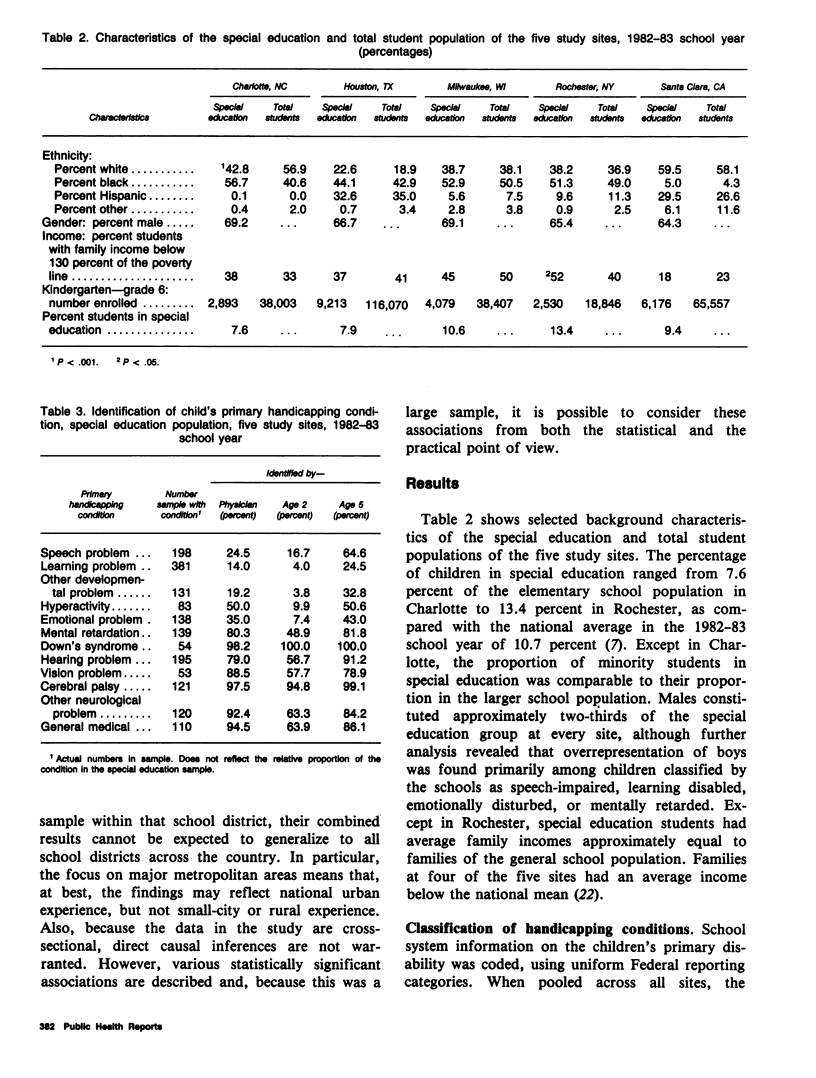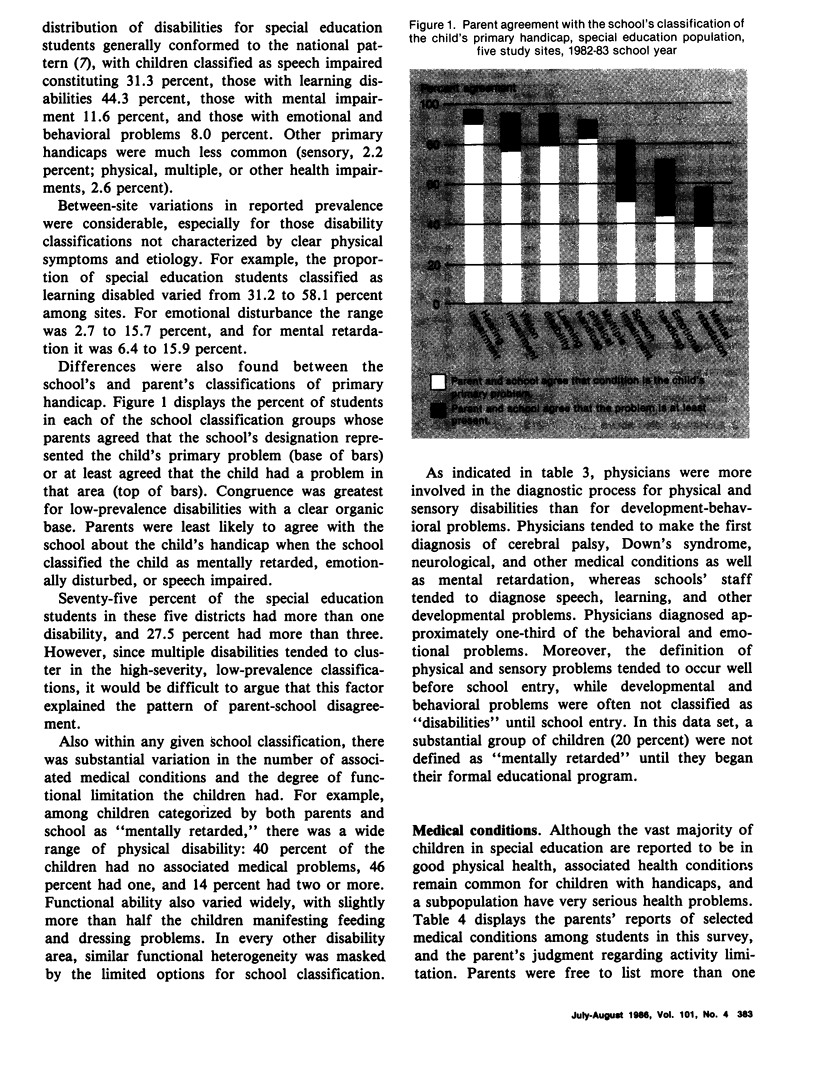Abstract
Since the implementation in 1977 of the Education for All Handicapped Children Act (Public Law 94-142), public school systems have provided special education and related services to students with a wide range of handicapping conditions, including some children served previously in hospitals or other institutions. Although the Federal law does not require physician participation in the special education process, it does imply an active new role for the medical care community, both public and private, in helping schools to identify and diagnose children with disabilities and in ensuring that those children have adequate access to health services. This study explores the experience of five nationally dispersed urban school systems in implementing P.L. 94-142, with particular reference to the interaction of physicians and the schools. The findings highlight continued problems with early identification of certain types of childhood handicaps, classification of children's functional disorders, and adequate participation of practicing physicians in the program, especially with regard to developmental and behavioral issues. In addition, inequities in community health services are documented for a substantial number of the children studied. Improved collaboration between the health and education sectors is needed to address these concerns in order to fulfill the intent of national special education policy and to maximize the potentialities of these children and their families.
Full text
PDF









Selected References
These references are in PubMed. This may not be the complete list of references from this article.
- Dunn L. M. Special education for the mildly retarded--is much of it justifiable? Except Child. 1968 Sep;35(1):5–22. [PubMed] [Google Scholar]
- Gottlieb J. Mainstreaming: fulfilling the promise? Am J Ment Defic. 1981 Sep;86(2):115–126. [PubMed] [Google Scholar]
- Palfrey J. S., Mervis R. C., Butler J. A. New directions in the evaluation and education of handicapped children. N Engl J Med. 1978 Apr 13;298(15):819–824. doi: 10.1056/NEJM197804132981505. [DOI] [PubMed] [Google Scholar]
- Patrick J. L., Reschly D. J. Relationship of state educational criteria and demographic variables to school-system prevalence of mental retardation. Am J Ment Defic. 1982 Jan;86(4):351–360. [PubMed] [Google Scholar]
- Schor E. L., Smalky K. A., Neff J. M. Primary care of previously institutionalized retarded children. Pediatrics. 1981 Apr;67(4):536–540. [PubMed] [Google Scholar]
- Singer J. D., Butler J. A., Palfrey J. S. Health care access and use among handicapped students in five public school systems. Med Care. 1986 Jan;24(1):1–13. doi: 10.1097/00005650-198601000-00001. [DOI] [PubMed] [Google Scholar]
- Sommers P. A., Fuchs C. Pediatric care for exceptional children: an inferential procedure utilizing consumer satisfaction information. Med Care. 1980 Jun;18(6):657–667. doi: 10.1097/00005650-198006000-00008. [DOI] [PubMed] [Google Scholar]
- Stein R. E., Jessop D. J. A noncategorical approach to chronic childhood illness. Public Health Rep. 1982 Jul-Aug;97(4):354–362. [PMC free article] [PubMed] [Google Scholar]


